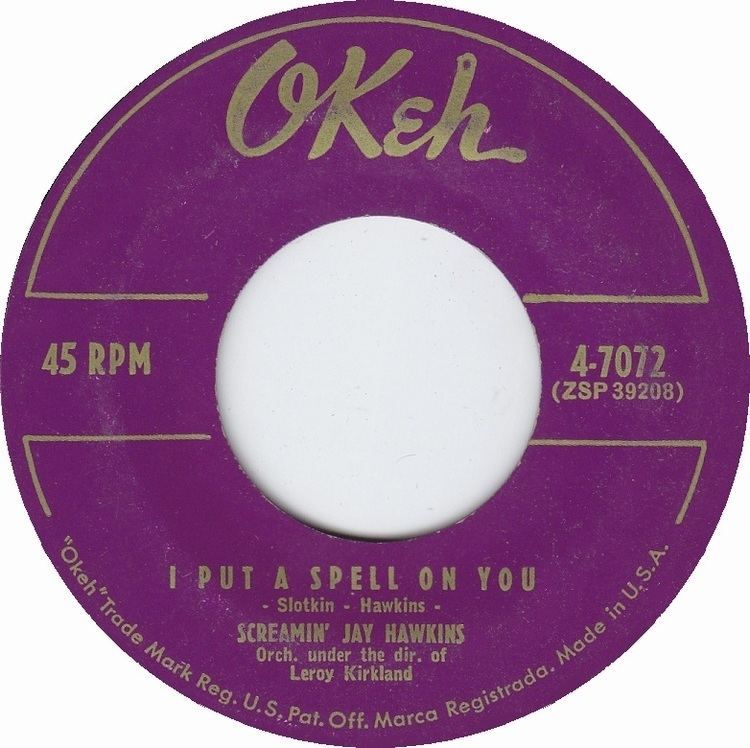B-side "Little Demon" | Length 2:25 | |
 | ||
Released November 1956 (1956-11) Format Seven-inch 45 rpm record Genre Rhythm and bluesshock rock | ||
"I Put a Spell on You" is a 1956 song written by Jay Hawkins, whose recording was selected as one of the Rock and Roll Hall of Fame's 500 Songs that Shaped Rock and Roll. It was also ranked No. 313 on Rolling Stone magazine's list of The 500 Greatest Songs of All Time. The track became a classic cult song covered by a variety of artists and was his greatest commercial success, reportedly surpassing a million copies in sales, although it failed to make the Billboard pop or R&B charts.
Contents
The original composition
Hawkins had originally intended to record "I Put a Spell on You" as "a refined love song, a blues ballad". However, the producer "brought in ribs and chicken and got everybody drunk, and we came out with this weird version ... I don't even remember making the record. Before, I was just a normal blues singer. I was just Jay Hawkins. It all sort of just fell in place. I found out I could do more destroying a song and screaming it to death."
Hawkins first recorded "I Put a Spell on You" during his stint with Grand Records in late 1955. However, that first version was not released at the time (it has since been reissued on Hawkins' UK Rev-Ola CD The Whamee 1953–55). The following year, in 1956, Hawkins re-recorded the song for Okeh Records, and this is the version best associated with Hawkins.
Release
The "new" version became a quick success, but was banned by some stores and radio stations nationwide, and did not appear on the record charts despite the fact it was clearly a good seller. The new version brought Hawkins together with Cleveland disc jockey Alan Freed who promptly added him to his "Rock and Roll Review".
Up to this time, Hawkins had been a blues performer: emotional, but not wild. Freed suggested a gimmick to capitalize on the "demented" sound of "I Put a Spell on You": Hawkins wore a long cape, and appeared onstage by rising out of a coffin in the midst of smoke and fog. The act was a sensation, later bolstered by tusks worn in Hawkins' nose, on-stage snakes and fireworks, and a cigarette-smoking skull named "Henry".
This theatrical act was one of the first shock rock performances.
Covers and samples
Although Hawkins' version did not make any charts, several later cover versions have:
Most of the covers treat the song seriously; few attempt to duplicate Hawkins's bravura performance. Other uses of the song include:
